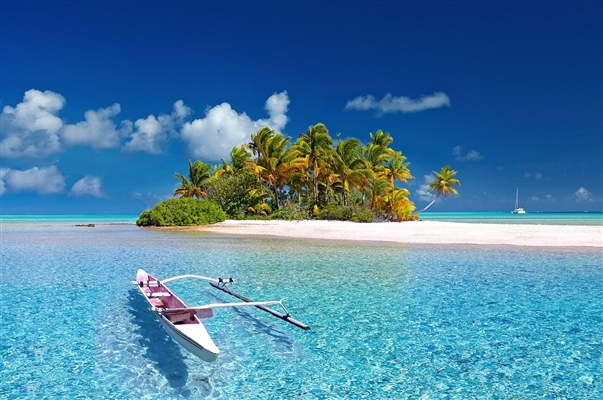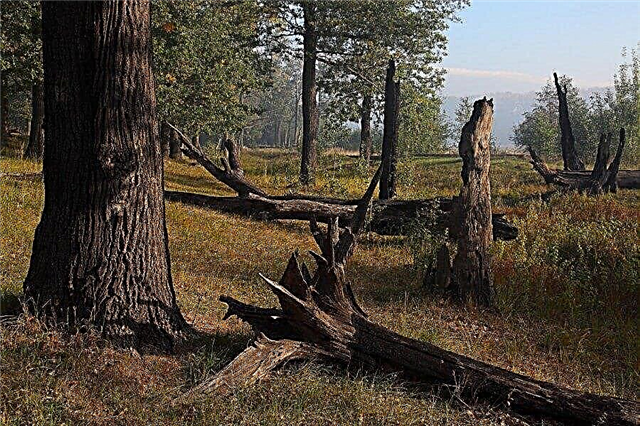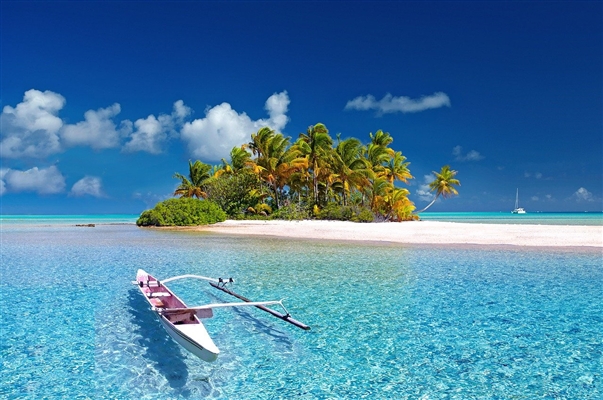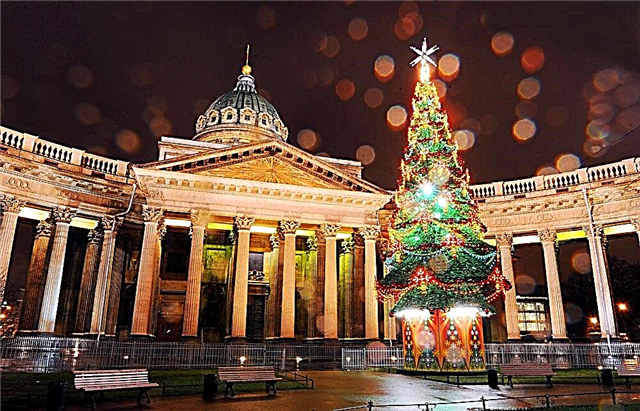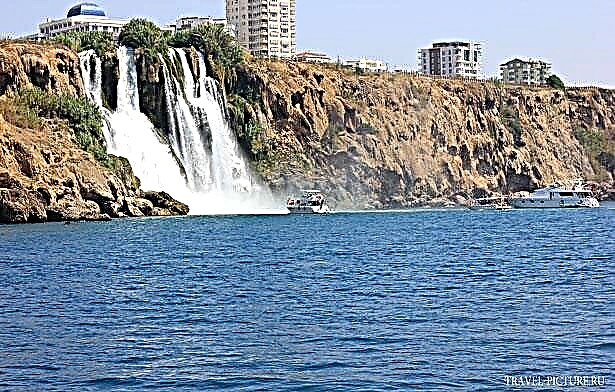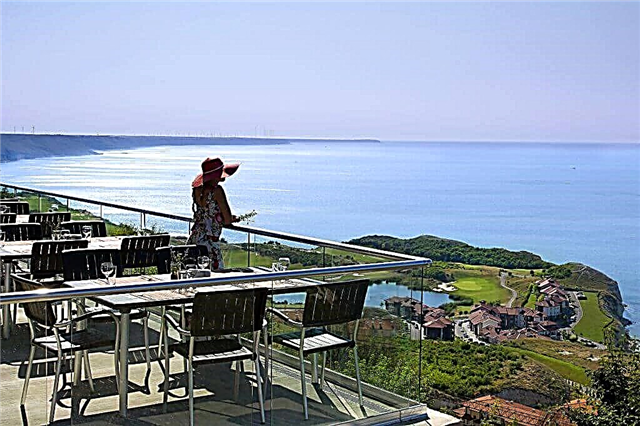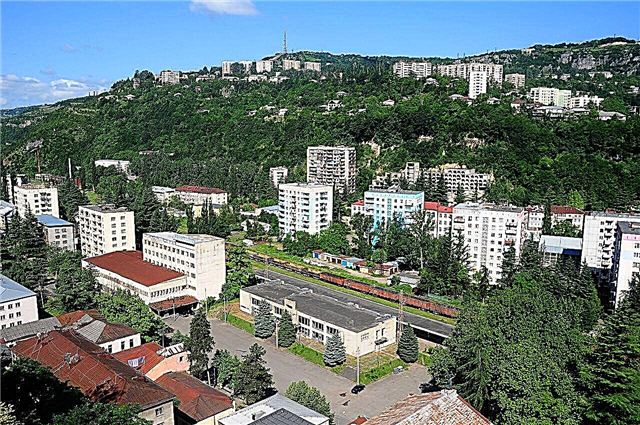Georgian cities are traditionally small. In just 4 of them, the population exceeds 100 thousand, including the capital, where one million people live. There are not many attractions within the cities, but a rich heritage remains in the districts, including old churches and temples, as well as medieval and earlier fortresses. Unfortunately, in most cases they are in a deplorable state or have already turned into ruins.
Cities take advantage of the gifts of nature, attracting tourists. So people come to Poti and its environs, including for a beach holiday, in Kobuleti - to visit a mountain reserve, and in Tskhaltubo - to wander through the underground labyrinths and breathe their healing air. At the same time, guests will be treated to local wine and national dishes everywhere.
The largest cities in Georgia
List of the largest cities in terms of population in the country.
Tbilisi
The capital and largest city of Georgia. The name Tbilisi was given because of the warm sulfur springs. More than 10 theater companies perform in the capital on an ongoing basis. Main museums: state, arts, ethnographic, history. Anchiskhati Church is the oldest surviving Orthodox church. Other significant objects: the Bridge of Peace, the Narikala fortress complex, the Tsminda Sameba Cathedral, the botanical garden.
Population - 1,083,800 people (2017).

Batumi
Port of the Black Sea coast. The city captivates with a variety of entertainment and leisure activities. Budget hotels coexist with luxury ones. Many excursion tours start from Batumi. Guests have access to a beach holiday, water activities, visiting historical sites, such as the fortress of Gonio Apsaros. There are new attractions such as the moving statue of Ali and Nino. Restaurants with national cuisine can be found on every corner.
Population - 163 440 people (2018).

Kutaisi
It is considered the second capital of Georgia. It is best to visit Kutaisi in winter and summer, the rest of the time it is cool and windy. The Bagrat Temple, erected on the Ukemerion Hill, is included in the UNESCO World Heritage List. In the central square, there is a fountain decorated with copies of archaeological finds from the local museum. You can also explore the city from above using the cable car.
Population - 140 961 people (2018).

Rustavi
It is located on the banks of the Kura River, 11 kilometers from the capital of Georgia. The cave monastery complex David Gareji is the main tourist attraction in the area. Its length is 25 kilometers. Elements of decoration, wood carvings, old paintings have been preserved inside. Some monasteries are still in operation. The surroundings are best viewed from the site at the Rustavsky Cross, installed at an altitude of 762 meters.
Population - 127 839 people (2018).

Burn
Location - Kartli Valley, where the Kura and Bolshaya Liakhvi merge. One of the most ancient cities in Georgia. Several iconic landmarks were destroyed in the 1920 earthquake. The ruins of the medieval fortress Goristsikhe rise above Gori. The Stalin Museum was opened. Excavations were carried out in the area and burials of the first centuries of our era were found.
Population - 48 300 people (2016).

Zugdidi
Located 30 kilometers from the Black Sea coast. The translation of the name from the Megrelian dialect is “big hill”. The symbol of Zugdidi and its main attraction is the palace of the Dadiani princes. Most of the halls are adapted for a museum. Nearby there is a botanical garden based on the old park. Local restaurants are famous for their national cuisine.
Population - 42 700 people (2017).

Poti
Port on the Black Sea coast. The Poti Local History Museum has collected an impressive collection of archaeological finds that allow you to learn more about the peoples of ancient Colchis. Tourists willingly visit the nearby national park and Lake Paliastomi. There are several beaches within the city limits, but recreation in the neighboring climatic resort of Maltakwa is more popular.
Population - 41 731 people (2018).

Samtredia
It is located in the west of the country and has a subtropical mild climate. At the end of the 20th century, the construction of the cathedral began, the construction of which was completed not so long ago. Not far from the city, in the family church of the princely family of Mikeladze, unique paintings of the 16th century were found. An international airport is located 10 kilometers from Samtredia.
Population - 30 100 people (2014).

Senaki
The literal translation of the name is "cell". In the last century, for 50 years, the city was called Mikha Tskhakaia. City status received in 1924. Located in the western part of the country. After the 1998 mutiny, it was decided to build a modern military base in the city. It was commissioned 10 years later. A monument to the heroes of the war was unveiled in the park on Rustaveli Avenue. Senaki has its own theater troupe.
Population - 28 600 people (2014).

Khashuri
The city developed thanks to the built railway. Main attractions: Suram Fortress, Museum of Local Lore, Church of St. Barbara, theater, fountain in the central area. Lost heritage: the monument to Stalin and the house of the museum of the writer Lesya Ukrainka. Khashuri is surrounded by coniferous forests: staying here is recommended for people with lung diseases and weakened immunity.
Population - 26 135 people (2014).

Zestafoni
Placed on both banks of the Kvirila River. On three sides the city is surrounded by mountains. In Zestafoni, typical buildings of the last century, with rare exceptions, such as the building of an old church. The sights of the surroundings are much more interesting: a medieval fortress, the Tabakinsky monastery of St. George, the family necropolis of local military leaders. Processing of grapes and winemaking is one of the important items of income for the local budget.
Population - 20 814 people (2014).

Marneuli
Located near the borders with Armenia and Azerbaijan. Most of the inhabitants are ethnic Azerbaijanis. The main religious sites: 3 mosques, including a new one that opened in Imiri, and a monastery complex of the XII-XIII centuries, not used for its intended purpose, but historically important. The city has a stadium and a large market. An American military base was located on the site of the destroyed airfield.
Population - 20 211 people (2014).

Kobuleti
The resort town of the Black Sea coast. In summer, there is no sweltering heat: the temperature does not rise above + 28 ° C, and a refreshing breeze blows from the sea. The main beach, which stretches for 9 kilometers, is covered with small pebbles. The main attractions of the area: the Kintrishi mountain reserve, the Tsitsinatela amusement park, where there is something to do for both children and adults, mineral springs.
Population - 19,700 people (2014).

Telavi
The districts of the city stretch in the valley of the Alakhani and Iori rivers. The Lord's Fortress - Batonis-Tsikhe served as the residence of the Kakhetian kings. Now it houses an art gallery. Not far from Telavi are the monastery of St. John of Zedazeni and the temple of the XI century. Harvesting attracts tourists: you can taste both young and mature classic Georgian wines.
Population - 19 629 people (2014).

Ozurgeti
Center of the western province of Guria. The collection of the local local history museum contains several curious objects, including Napoleon's sword, Colchis axes, archaeological finds and old printed books. On the square there is a theater building, and not far from it is a square with an Orthodox church. The eastern part of Ozurgeti is occupied by fruit-bearing orchards.
Population - 18 600 people (2014).

Akhaltsikhe
It stands on the Potskhovis-Tskali River in the southern part of the country. It is an important transport junction: a road goes through Akhaltsikhe towards Turkey. Sightseeing: the Church of the Epiphany of the Holy Cross, a fortress built in the 16th-18th centuries, the Akhmediye mosque, a monument to Queen Tamara. The Sapara Monastery has been preserved in the vicinity.From here to the resort of Abastumani is less than 30 kilometers.
Population - 17 903 people (2014).

Tkibuli
It is located on the southwestern slopes of the Rachinsky ridge. The economy is based on tea leaf processing and coal mining. Two hydroelectric power plants have been built in the vicinity. The main square of the city is decorated with a theater building. A nearby café serves traditional dishes including khachapuri. In the suburbs there are caves and an old fortress.
Population - 13 900 people (2014).

Kaspi
One of the oldest settlements in the Kartli region and throughout Georgia. Half a kilometer of fields separates the city from the banks of the Kura. There are few significant objects in the Kaspi itself: monuments to Georgy Saakadze - the commander of the 17th century and Shota Rustaveli, a church dating from the 4th century, and a museum of local lore. The surroundings are richer in historical beauty: the Ertatsminda temple, the ruins of the Skhvilo castle and the Amilakhvari fortress.
Population - 13 423 people (2014).

Chiatura
The establishment of the city was facilitated by the discovery of manganese ore deposits. Sightseeing: Jarbeli caves and a medieval fortress. The domed temple of Matskhovari, founded at the turn of the X-XI centuries, has been preserved near Chiatura. There are even fragments of ancient paintings left there.
The city has a cable car that can be used to get from the center to the outskirts. There are 10 passenger routes available.
Population - 12 803 people (2014).

Tskhaltubo
The area is picturesque, which is explained by the geographical position of the city: here is the border between the Colchis Lowland and the Greater Caucasus. The presence of warm radon sources made it possible to turn Tskhaltubo into a full-fledged resort. The surroundings are replete with cave complexes. The microclimate of the underground labyrinths is useful for many diseases, so excursion groups are often chosen here.
Population - 11,281 people (2014).

Honi
Occupies the left bank of the Tskhenistskali River. The status of the city was received in 1921. There are few attractions, for example, the Church of St. George, the house-museum of the politician Alexander Tsulukidze, the seminary and the ethnographic museum. The economy is based on industry: there is a tea factory and a mechanical plant. There is a small airfield in the suburbs.
Population - 11,200 people (2014).

Sagarejo
Located in the Iorskaya Valley. From here to Tbilisi 58 kilometers. The main architectural monument is the David-Gareja Monastery. The area is famous for its ancient fortresses, most of which have been turned into ruins. Here grapes are grown and some wines are produced. Not far from the border with Azerbaijan, a cave monastery of the 6th century has been preserved.
Population - 10 871 people (2014).

Gardabani
The city got its name from a medieval fortress, the remains of which can be found nearby. Located 33 kilometers from the capital. The GRES built in Gardabani provides the capital with warmth. In 2009, an American military base began functioning here. There are few attractions, for example, the Lilo market and the mosque in the village of Garajalar. In the east, there is Lake Jandari, favored by fishermen.
Population - 10,753 people (2014).

Borjomi
The resort is famous for its mineral waters exported abroad. The main healing spring gushes in the beautiful pavilion of the central park. The symbols of the city are the house of Mirza-Riza-khan and the palace of the Romanovs. In the Daba cave near Borjomi you can find a unique attraction - a wooden church named after St. George. There is a national park nearby.
Population - 10 546 people (2014).

Bolnisi
During the Soviet period, for some time it was called Luxembourg in honor of a German communist. In the past, it was the seat of the bishop and archbishop. Bolnisi Zion is the most ancient temple on the territory of Georgia. It dates from the 5th century. Images, ornaments and the masonry itself have connections not only with early Christianity, but also with local cults. The area is popular for brewing and winemaking.
Population - 8967 people (2014).


